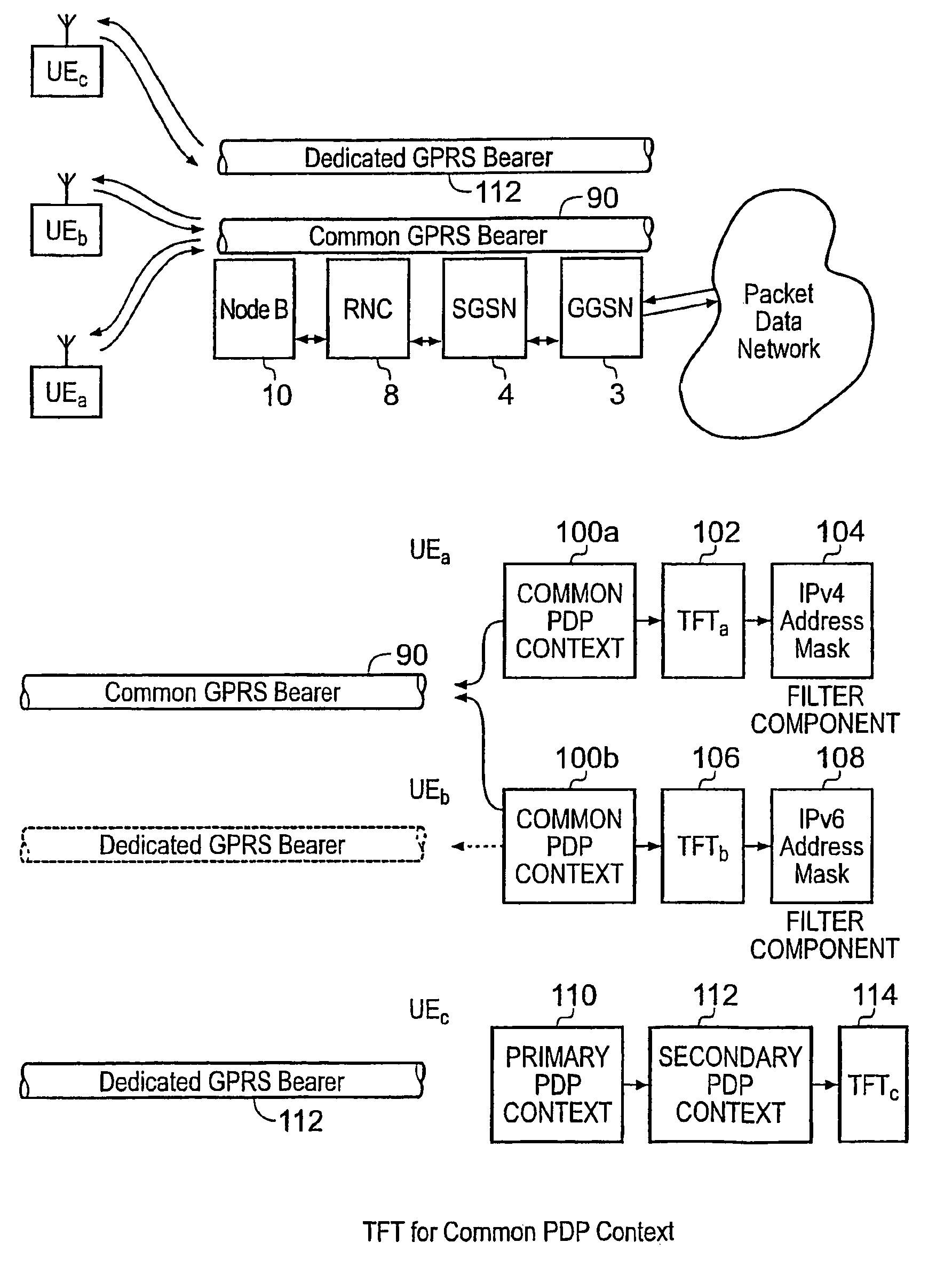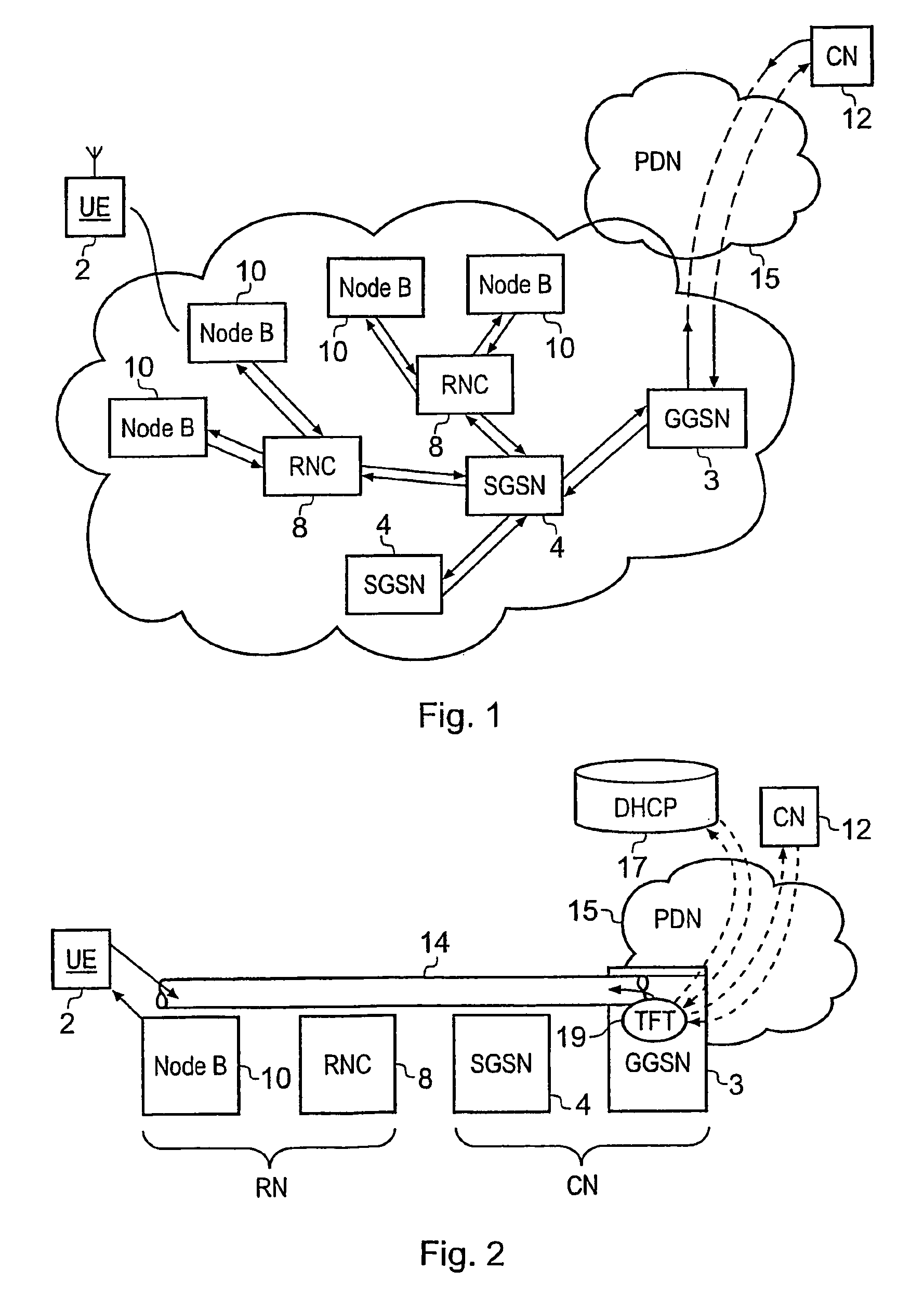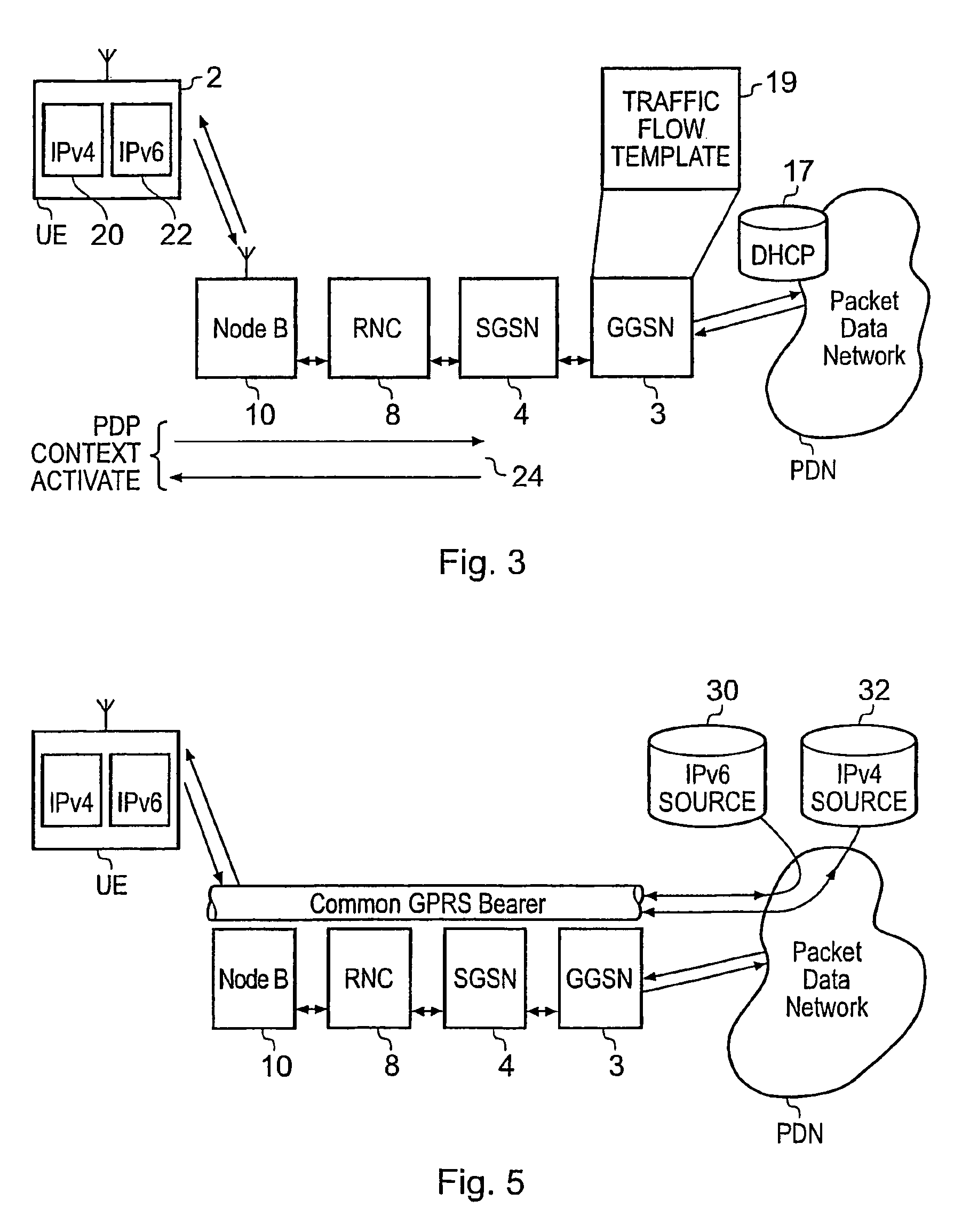Packet radio network and method
a technology of radio network and packet radio, applied in the field of packet radio network, can solve the problems of resource utilisation that cannot be achieved, resource may be utilised less efficiently than could be achieved, and so as to improve resource utilisation efficiency, resource may be utilised less efficiently, and the effect of improving resource utilisation efficiency
- Summary
- Abstract
- Description
- Claims
- Application Information
AI Technical Summary
Benefits of technology
Problems solved by technology
Method used
Image
Examples
Embodiment Construction
[0037]FIG. 1 provides a schematic block diagram of a GPRS / UMTS packet radio network 1 for communicating internet packets between a mobile user equipment (UE) 2 and a correspondent node (CN) 12, which is attached to an external packet data network 15. In FIG. 1 the UE 2 is arranged to host an application program providing, for example a multimedia service to a user. FIG. 1 shows elements of a GPRS network which are a GPRS gateway service mode (GGSN) 3 a serving GRPS support mode (SGSN) 4 and a radio network controller (RNC) 8. As shown FIG. 2, which provides a simplified representation of the GPRS network shown in FIG. 1, generally the GGSN 3 and the SGSN 4 form parts of a core network, CN, whereas the radio network controller RNC 8 forms part of a radio network RN. As shown in FIG. 2, in a simplified form for the present description, the GPRS network 1 is providing an internet protocol bearer 14 for which a packet data context has been established. As will be explained shortly, a pa...
PUM
 Login to View More
Login to View More Abstract
Description
Claims
Application Information
 Login to View More
Login to View More - R&D
- Intellectual Property
- Life Sciences
- Materials
- Tech Scout
- Unparalleled Data Quality
- Higher Quality Content
- 60% Fewer Hallucinations
Browse by: Latest US Patents, China's latest patents, Technical Efficacy Thesaurus, Application Domain, Technology Topic, Popular Technical Reports.
© 2025 PatSnap. All rights reserved.Legal|Privacy policy|Modern Slavery Act Transparency Statement|Sitemap|About US| Contact US: help@patsnap.com



